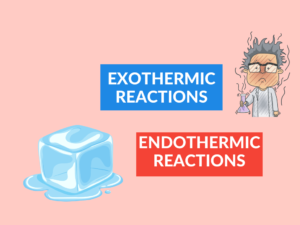Calcination vs Roasting: Understanding the Differences
Calcination and roasting are thermal processes used in various industries for different purposes. In this article, we will explore the definitions, examples, and uses of calcination and roasting, and highlight the key differences between them.
What is Calcination?
Calcination is a heating process that involves the conversion of a substance into a different form through intense heat. It is often used to remove volatile compounds, water, or other impurities.
Examples of Calcination:
- Heating limestone (CaCO3) to produce quicklime (CaO) and carbon dioxide (CO2).
- Baking clay to remove moisture and improve its strength for pottery.
Uses of Calcination:
- Manufacturing quicklime for construction purposes.
- Producing gypsum for plasterboard.
- Preparing catalysts for chemical reactions.
What is Roasting?
Roasting is a process that involves the heating of an ore or other material in the absence of air. It is primarily used for metallurgical purposes to convert ores into more desirable forms.
Examples of Roasting:
- Heating iron ore (Fe2O3) in the presence of carbon to produce iron (Fe) and carbon monoxide (CO).
- Roasting sulfide ores to oxidize sulfur and convert them into oxides.
Uses of Roasting:
- Extracting metals from their ores, such as copper, lead, and zinc.
- Preparing high-purity metal oxides for various applications.
- Processing certain types of minerals for industrial use.
Differences between Calcination and Roasting:
| Difference Area | Calcination | Roasting |
|---|---|---|
| Heat Requirement | Requires low to moderate heat | Requires high heat |
| Presence of Oxygen | Oxygen may or may not be present | Oxygen is absent |
| Purpose | Removal of volatile compounds and impurities, or conversion into a different form | Conversion of ores or materials into more desirable forms |
| Materials Involved | Chemical compounds, carbonates, etc. | Ores, sulfides, etc. |
| End Products | Oxides, quicklime, pottery, etc. | Metal, metal oxides, etc. |
| Industry Applications | Construction, ceramics, chemical synthesis | Metallurgy, mineral processing |
| Temperature Range | 500-900°C | Above 900°C |
| Reaction Type | May involve endothermic or exothermic reactions | Usually involves exothermic reactions |
| Gas Evolution | May produce various gases, such as CO2 or SO2 | May produce sulfur dioxide (SO2) or other gases |
| Commonly Used in | Chemical industry, construction | Metallurgical processes |
Conclusion:
In summary, calcination and roasting differ in terms of their heat requirement, presence/existence of oxygen, purpose, materials involved, end products, industry applications, temperature range, reaction type, and gas evolution. Calcination is primarily used to remove volatile compounds and impurities or convert substances into different forms, often at lower temperatures, while roasting is focused on converting ores and materials into more desirable forms using higher temperatures and in the absence of oxygen.
People Also Ask:
1. What is the main difference between calcination and roasting?
Calcination involves the removal of volatile compounds or impurities, while roasting is the process of converting ores into more desirable forms, both through heating.
2. Is calcination an endothermic or exothermic process?
Calcination can involve both endothermic and exothermic reactions, depending on the specific materials and compounds involved.
3. Which industries commonly use calcination?
Calcination is widely used in industries such as construction, ceramics, and chemical synthesis.
4. What is the temperature range for roasting?
Roasting generally requires temperatures above 900°C for the conversion of ores and materials.
5. Can roasting produce harmful gases?
Yes, roasting can involve the production of gases such as sulfur dioxide (SO2) or other harmful gases depending on the composition of the material being roasted.


